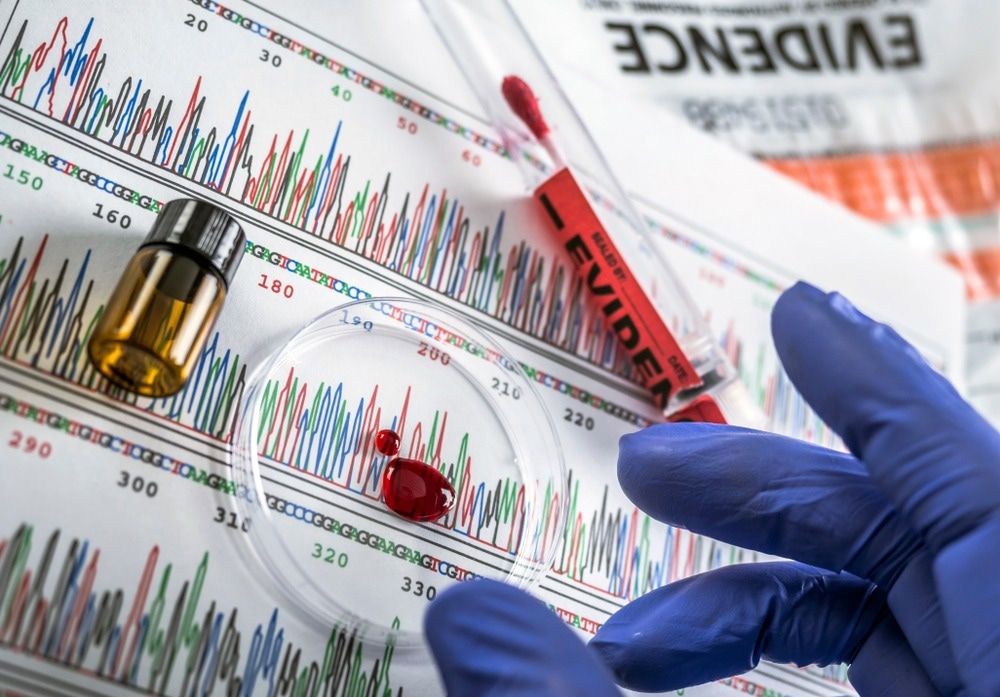What is rapid DNA?
Rapid DNA is the automated process of quickly establishing a DNA profile without requiring skilled human staff to run an analysis. Law enforcement agencies currently use it globally to run DNA samples taken via cheek swabs from suspects under arrest against other samples within the agency’s database.
A match indicates that the suspect is implicated in the crime from which the matching sample of DNA was obtained. The process takes around 90 minutes. In the US, currently, 30 states and the federal government allow Rapid DNA testing to be used.
Solving crimes at hyper-speed: New Rapid DNA tech identifies suspects in minutes
How does rapid DNA work?
In general, there are four steps of rapid DNA analysis. First is extraction, where the DNA is separated from the other proteins and cells in the sample. Next is amplification, where multiple copies of the DNA are produced so that there is enough DNA to be tested. Following this is the separation process, where the DNA is cut at loci into smaller pieces using enzymes. This separated DNA then goes through electrophoresis, where the fragments are sorted by size across a gel, forming a pattern of bands unique to the individual. Finally, in the detection phase, the patterns of DNA bands at each locus are compared against the samples in the system; this is how a match is determined.
The benefits of rapid DNA
The main benefit of rapid DNA is its speed. While traditional DNA analysis requires a skilled technician or scientist at each step, which could take hours, the rapid DNA machine automates these steps and drastically reduces the time to get results. The person running the machine needs to insert the sample into a disposable cartridge and let the machine run. This means that DNA results can be obtained in as little as 90 minutes while suspects are still held in police custody.
In addition, with rapid DNA, there is less risk of contamination of the sample compared to traditional DNA testing, where the sample is identified, collected, transported to a DNA testing facility, and then handled again by technicians. Each step introduces another opportunity for contamination. With rapid DNA, fewer steps and fewer people are handling the sample, lowering the risk of contamination. The sample is simply collected and placed into the machine.
The drawbacks of rapid DNA
One major drawback of rapid DNA is that it is a destructive process and, therefore, cannot be used at crime scenes where only a limited sample of DNA is available. Samples used in rapid DNA cannot be retested, so in some scenarios, it is not suitable to use rapid DNA. Rapid DNA is mostly used to ascertain whether someone is implicated in a crime quickly.
A sample can be taken from a suspect on the spot, which can be compared against other samples in the system from thousands of other crime scenes. It is unsuitable for testing small samples left at the scene of a crime, such as small drops of blood, as these need to be carefully maintained to be used as evidence and perhaps tested multiple times. Additionally, crime scene samples often contain multiple DNA sources, requiring a trained forensic scientist to interpret the results.

Image Credit: felipe caparros/Shutterstock.com
How is rapid DNA currently being used in forensic science?
While rapid DNA has not been around for many years, it is already proving its use in helping to find killers and rapists, as well as acquit those not guilty of a crime where DNA provides pivotal evidence.
In June 2019, the US Immigration and Customs Enforcement began using rapid DNA tests at the US border to determine familial relationships of migrants to detect human trafficking. California has also recently used rapid DNA testing to identify the victims of huge wildfires, taking samples from human remains to identify the bodies and bring closure to families.
In Kentucky, rapid DNA is being used to reduce the backlog of DNA tests waiting to be conducted - helping to identify sexual assault offenders as well as clearing those falsely accused. In Utah, rapid DNA testing was employed to identify the remains of a missing hiker, found ten months after his family last saw him. In Minnesota, rapid DNA has been used to successfully identify the killer of two infants.
Rapid DNA can potentially identify culprits of heinous crimes before they leave custody and become a flight risk. It also has the potential to clear the names of those wrongfully suspected and identify John and Jane Does. Finally, rapid DNA can link criminals to crimes they are not suspected of. The Rapid DNA initiative enrolls all qualified arrestees’ DNA into CODIS/NDIS at the time they are booked for a crime. The arrestee’s DNA is then compared with samples from those collected at the scenes of unsolved crimes to identify any matches. This helps police find who is responsible for crimes where leads may have gone cold.

 Read Next: How has DNA Analysis Evolved in Forensics?
Read Next: How has DNA Analysis Evolved in Forensics?
Further Reading
Last Updated: Jul 1, 2023